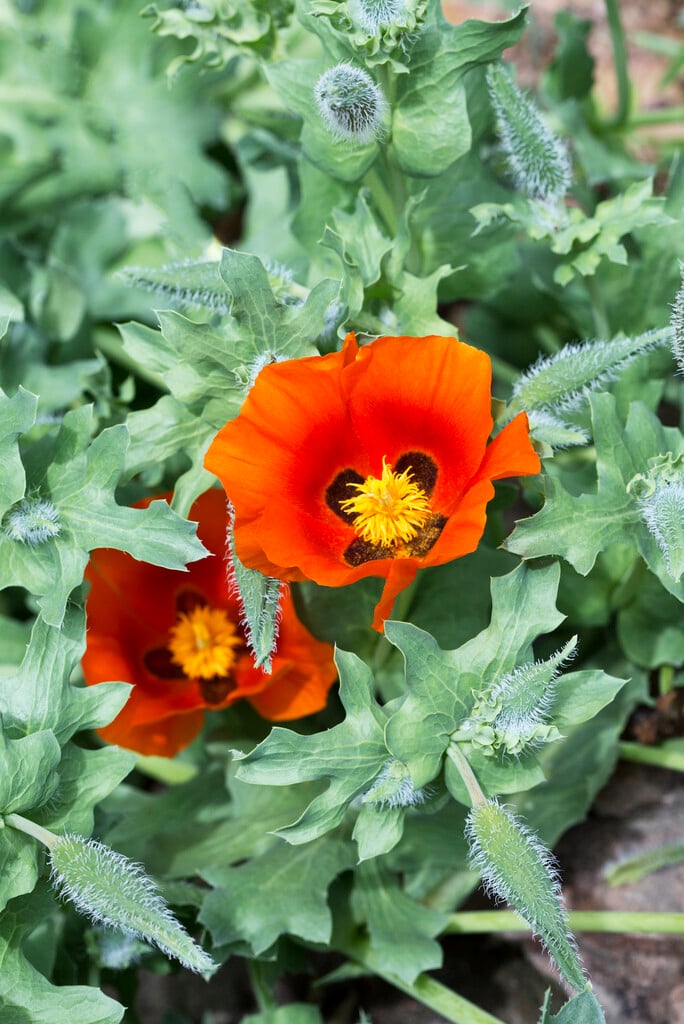Glaucium corniculatum
red horned poppy
A slightly hairy biennial forming a rosette of deeply-lobed, silver-grey leaves. Branched grey stems carry crimson-red to orange poppy flowers usually with a black spot at the base of each petal, from summer to early autumn followed by long narrow seed pods
Size
Ultimate height
0.1–0.5 metresTime to ultimate height
1–2 yearsUltimate spread
0.1–0.5 metresGrowing conditions
Moisture
Well–drainedpH
Acid, Alkaline, NeutralColour & scent
| Stem | Flower | Foliage | Fruit | |
| Spring | Grey Silver | |||
|---|---|---|---|---|
| Summer | Red Orange Black | Grey Silver | ||
| Autumn | Red Orange Black | Grey Silver | ||
| Winter |
Position
- Full sun
Aspect
South–facing or West–facing
Exposure
Exposed or ShelteredDrought resistance
Yes Hardiness
H6Botanical details
- Family
- Papaveraceae
- Native to GB / Ireland
- No
- Foliage
- Deciduous
- Habit
- Clump forming
- Genus
Glaucium are erect, often rosette-forming, annuals, biennials and short-lived perennials with matt, blue-green or grey-green leaves and showy, poppy flowers
- Name status
Correct
- Plant range
- S Europe
How to grow
Cultivation
Grow in poor to moderately fertile well-drained soil in full sun. Resents root disturbance
Propagation
Propagate by seed in situ in spring or autumn
Suggested planting locations and garden types
- City and courtyard gardens
- Coastal
- Cottage and informal garden
- Gravel garden
- Wildlife gardens
- Flower borders and beds
- Garden edging
- Underplanting of roses and shrubs
Pruning
No pruning required
Pests
Generally pest-free
Diseases
Generally disease-free
Love gardening
Sign up to receive regular gardening tips, inspiration, offers and more
View our Privacy Policy
Get involved
The Royal Horticultural Society is the UK’s leading gardening charity. We aim to enrich everyone’s life through plants, and make the UK a greener and more beautiful place.
